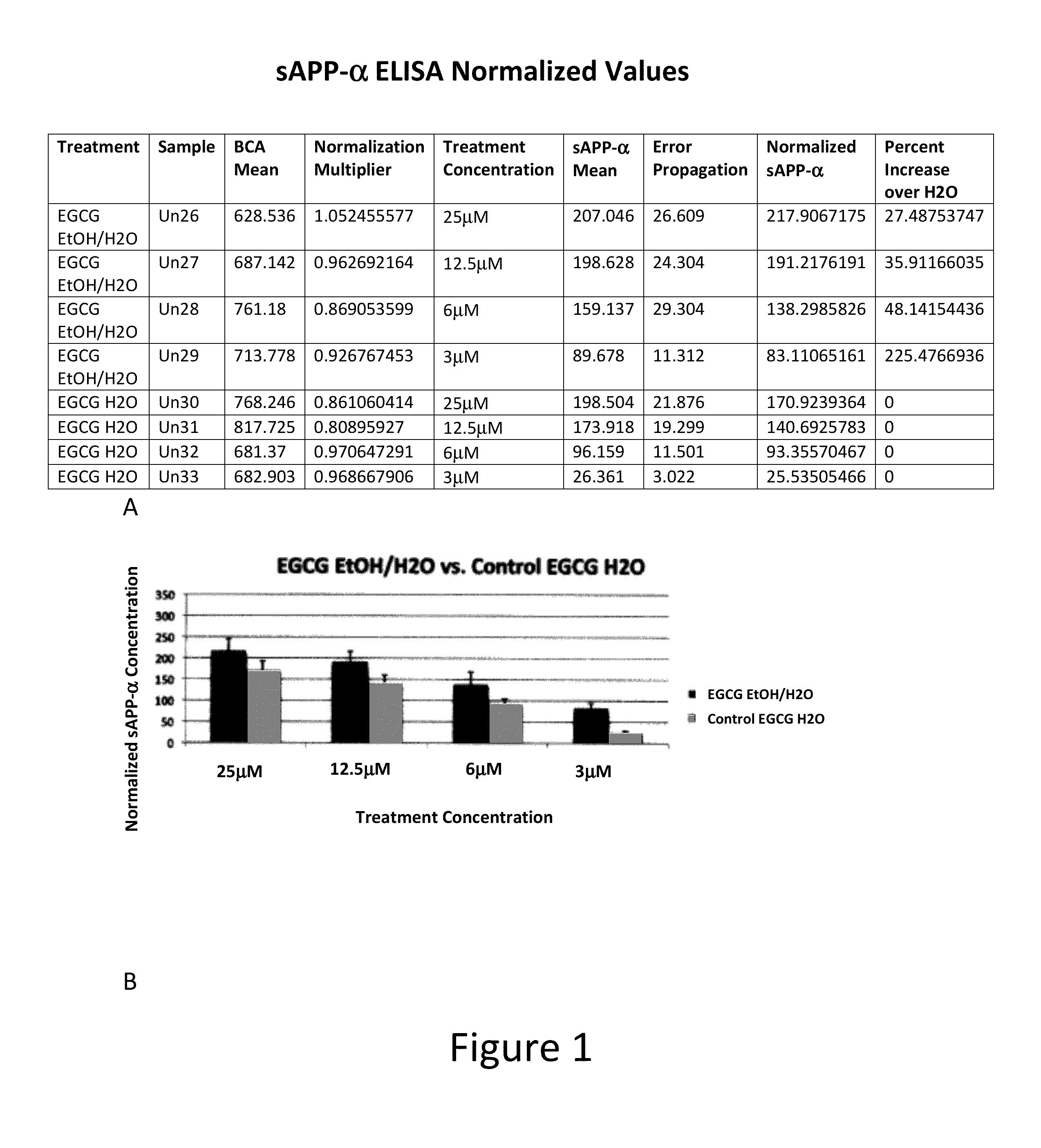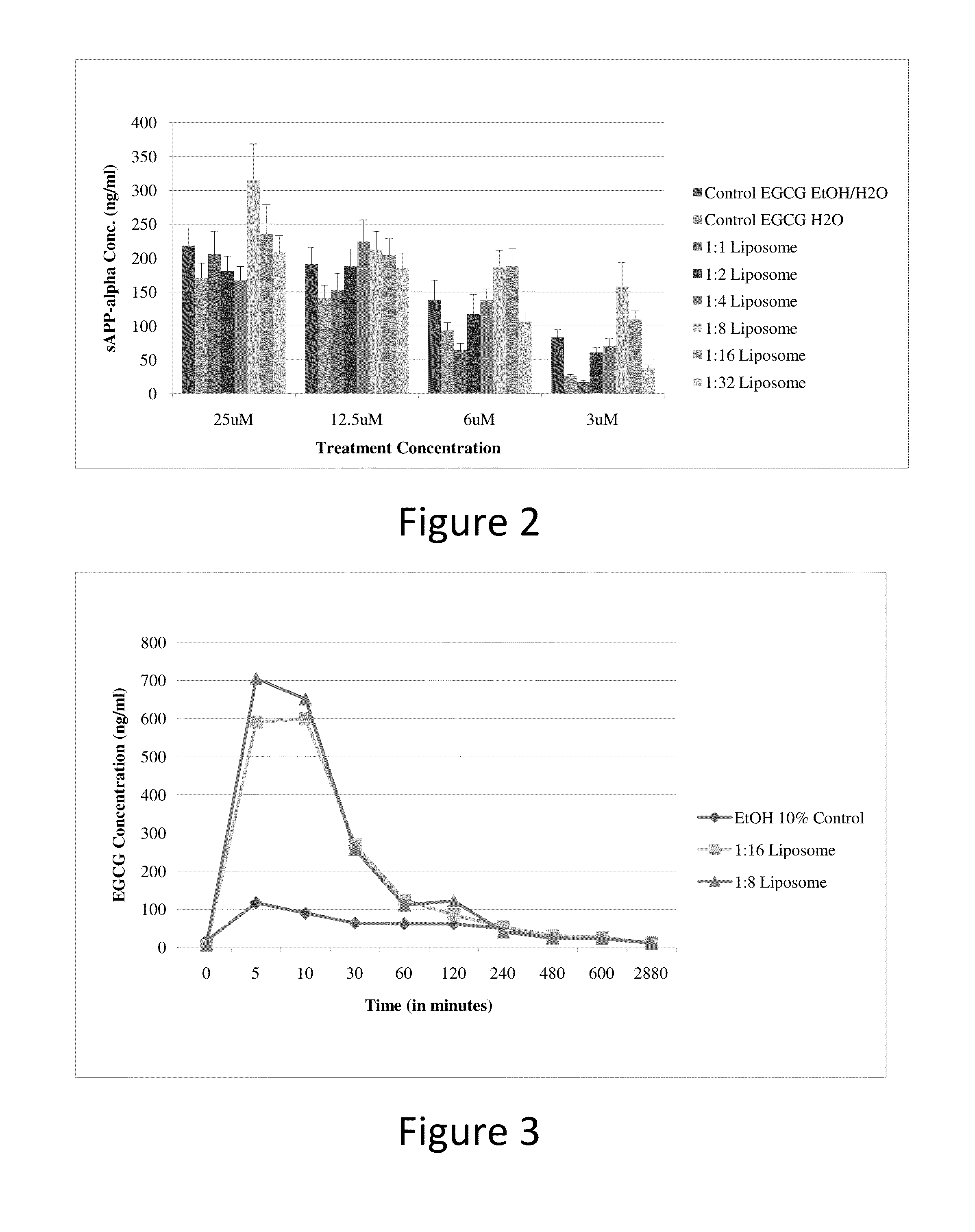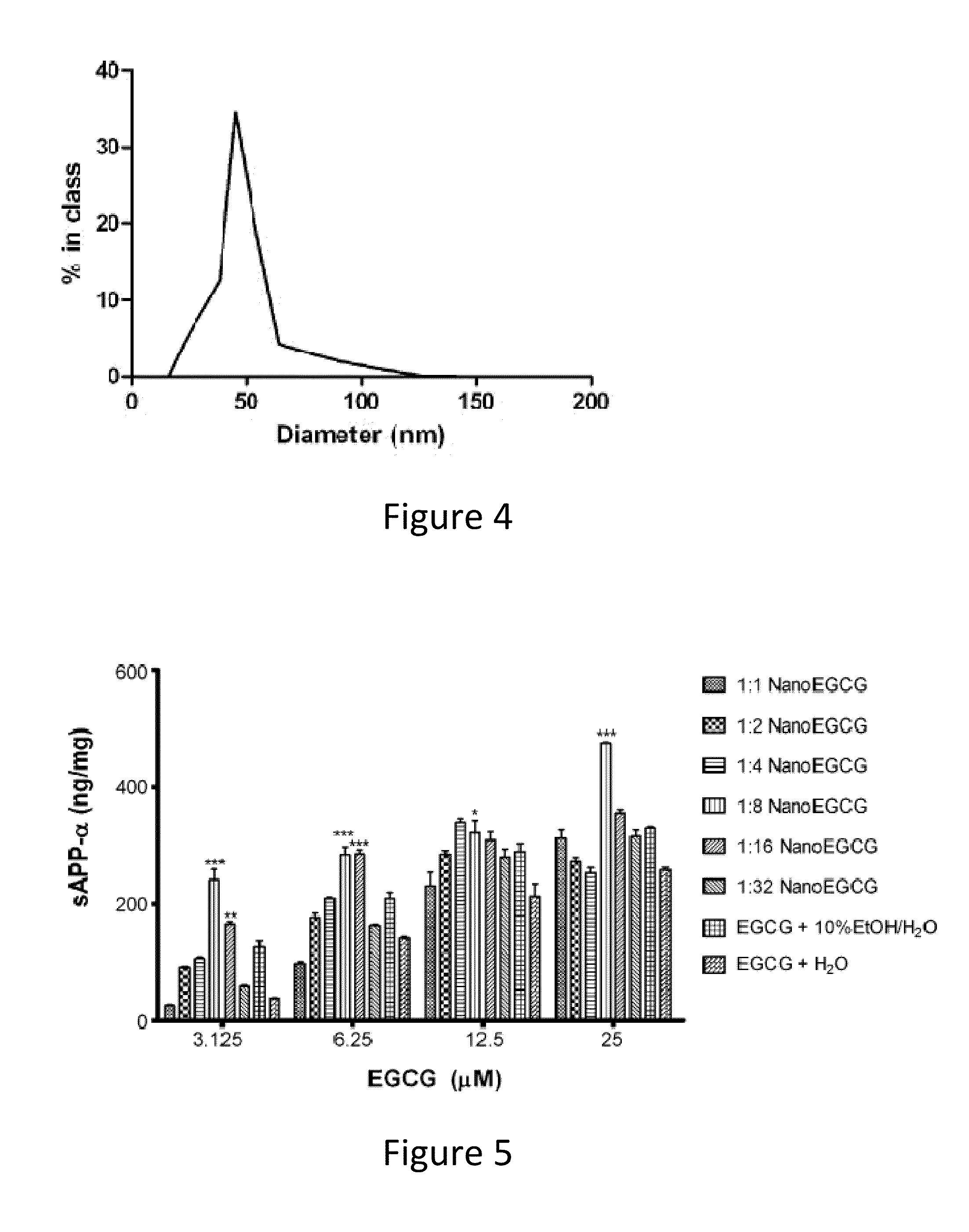Methods and compositions for improving bioavailability of epigallocatechin gallate (EGCG)
a technology of epigallocatechin gallate and composition, which is applied in the field of composition and methods of improving the bioavailability of epigallocatechin gallate, can solve the problems of primarily problematic translation into clinical use, and achieve the effects of preventing amyloidogenic processing of amyloid precursor protein, enhancing alph-secretase activity, and poor bioavailability
- Summary
- Abstract
- Description
- Claims
- Application Information
AI Technical Summary
Benefits of technology
Problems solved by technology
Method used
Image
Examples
example 1
[0038]Epigallocatechin gallate (EGCG) has recently gained the attention of scientists for implementation as a therapeutic agent for the treatment of many diseases. Current research suggests that EGCG has implications as a treatment for Alzheimer's disease, HIV-associated dementia (HAD), bacterium, viruses, as well as many types of cancer. The full benefit of EGCG, however, has yet to be fully realized due to its low bioavailability in vivo.
[0039]Many researchers have begun to try to address the bioavailability problems that thwart the development of EGCG as a therapeutic as well as an improved dietary supplement for promoting general health. Although potential methods for altering the pharmacokinetics have been identified, all of them require either the alteration or co-administration of EGCG with other compounds. Implementation of these approaches would, consequently, increase the cost of production and bring about new safety concerns to an otherwise proven-safe, natural compound.
[...
example 2
[0045]Since APP processing occurs at the nanoscale, nanotechnology can be to specifically diagnose and treat neurodegenerative diseases, specifically AD, and HAD. Nanoparticles made up of biodegradable and biocompatible polymers such as chitosin, PLA, PLGA, starch, etc., (Greff et al., 1994) have much evidence to support their safety, biocompatibility, and ability to modulate the chronicity of polymer degradation and thus release of the incorporated compound.
[0046]Antioxidants have gained the attention of researchers around the world, both in industry and academia. These compounds are required by the body to scavenge free radicals that would otherwise cause damage at the cellular level. Oxidative stress (caused by an imbalance between oxidants and antioxidants) has been identified as the major cause in many neurodegenerative diseases, cancer, and other age-related diseases. Although humans produce intrinsic enzymatic antioxidants like superoxide dismutase (SOD), catalase (CAT), and ...
example 3
[0057]The inventors investigated the ability of preformulation methods to improve the oral bioavailability of EGCG. It was found that forming nanolipidic EGCG particles improves the neuronal (SweAPP N2a cells) α-secretase enhancing ability in vitro by up to 91% (P<001) and its oral bioavailability in vivo by more than two-fold over free EGCG.
[0058]Nanoparticles and larger liposomes have been investigated extensively for increasing the oral bioavailability of poorly absorbed compounds (Frezard et al., 2008; He et al., 2007; Kumar et al., 2007; Pandey et al., 2005; Rao et al., 2008). It has been recently reported that encapsulating EGCG into liposomes can improve its anti-cancer efficacy (Siddiqui et al., 2009) and antioxidant capacity (Italia et al., 2008). However, these studies utilized larger diameter particles (>100 nm) and focused primarily on improved efficacy of EGCG for specific disease modifying parameters. The inventors have tested the ability of small diameter nanolipidic ...
PUM
| Property | Measurement | Unit |
|---|---|---|
| size | aaaaa | aaaaa |
| concentrations | aaaaa | aaaaa |
| concentration | aaaaa | aaaaa |
Abstract
Description
Claims
Application Information
 Login to View More
Login to View More - R&D
- Intellectual Property
- Life Sciences
- Materials
- Tech Scout
- Unparalleled Data Quality
- Higher Quality Content
- 60% Fewer Hallucinations
Browse by: Latest US Patents, China's latest patents, Technical Efficacy Thesaurus, Application Domain, Technology Topic, Popular Technical Reports.
© 2025 PatSnap. All rights reserved.Legal|Privacy policy|Modern Slavery Act Transparency Statement|Sitemap|About US| Contact US: help@patsnap.com



